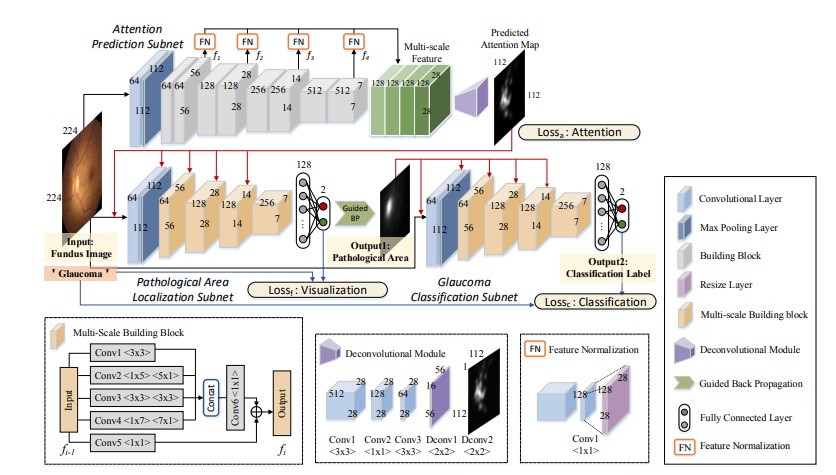- ALL COMPUTER, ELECTRONICS AND MECHANICAL COURSES AVAILABLE…. PROJECT GUIDANCE SINCE 2004. FOR FURTHER DETAILS CALL 9443117328


Projects > ELECTRONICS > 2020 > IEEE > DIGITAL IMAGE PROCESSING
Glaucoma is one of the leading causes of irreversible vision loss. Many approaches have recently been proposed for automatic glaucoma detection based on fundus images. However, none of the existing approaches can efficiently remove high redundancy in fundus images for glaucoma detection, which may reduce the reliability and accuracy of glaucoma detection. To avoid this disadvantage, this paper proposes an attention-based convolutional neural network (CNN) for glaucoma detection, called AGCNN. Specifically, we first establish a large-scale attention-based glaucoma (LAG) database, which includes 11,760 fundus images labeled as either positive glaucoma (4,878) or negative glaucoma (6,882). Among the 11,760 fundus images, the attention maps of 5,824 images are further obtained from ophthalmologists through a simulated eye-tracking experiment. Then, a new structure of AG-CNN is designed, including an attention prediction subnet, a pathological area localization subnet and a glaucoma classification subnet. The attention maps are predicted in the attention prediction subnet to highlight the salient regions for glaucoma detection, under a weakly supervised training manner. In contrast to other attention-based CNN methods, the features are also visualized as the localized pathological area, which are further added in our AGCNN structure to enhance the glaucoma detection performance.
Class activation mapping model (CAM)
The main contributions of this paper are twofold. (1) We establish a LAG database that includes 11,760 glaucoma-labeled fundus images, among which 5,824 images are further labeled with attention maps. (2) We propose a new AG-CNN architecture for locating pathological areas and then classifying binary glaucoma, in which attention maps are incorporated in a weakly supervised manner to remove the redundancy from fundus images for glaucoma detection.
BLOCK DIAGRAM
